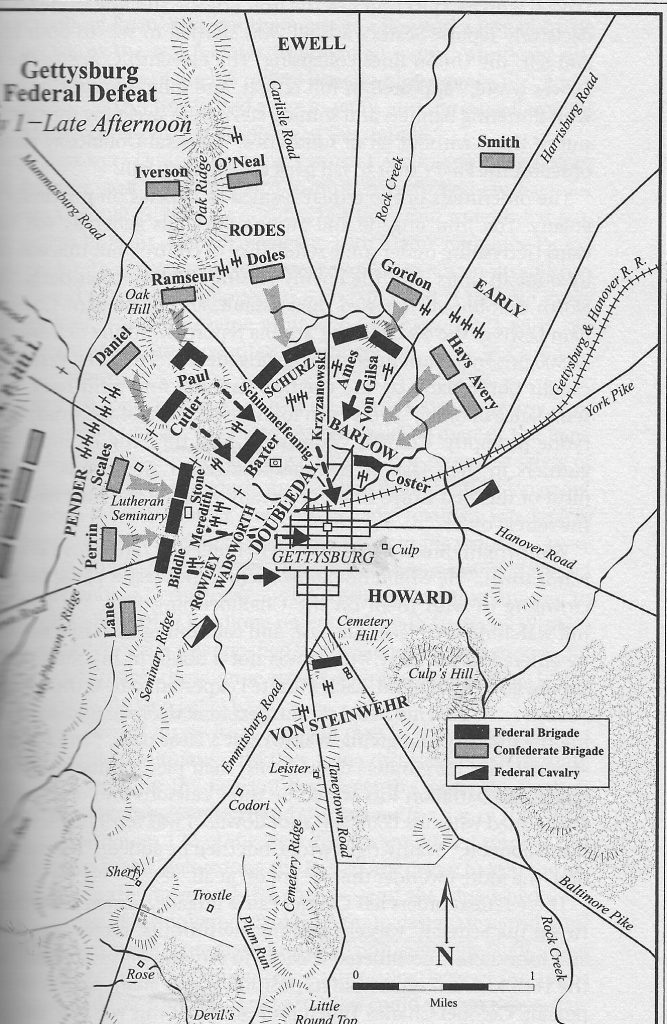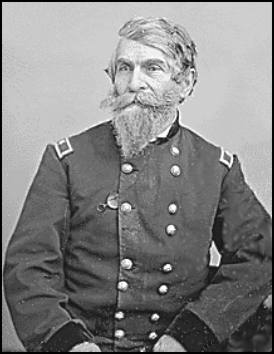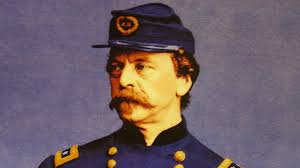GEN George Meade was new to this lofty command, but he knew well the men who he now commanded. He had been a division commander under corps commander Reynolds. He knew and trusted him. When he had received the rather unexpected and startling dispatch in which Buford outlined his plan and asked for reinforcements and relief as soon as possible on 1 July, Meade almost immediately sent the order to Reynolds to support him. He didn’t know Buford well but he knew Reynolds trusted him and thought highly of his skills. He was willing to gamble on them but only to a point. He was still uncertain if he should commit his entire army to a battle in a place that no one but Buford had even seen.
Meade’s alternative was to relieve Buford and court martial him for any number of military violations.
He did have another card to play. LTG Hancock was one of the most experienced and skilled of all his senior staff. Meade would send him to Gettysburg with all haste to be his eyes and ears and to assess the situation before Meade committed all. Trouble was Hancock was still south of Westminster and wasn’t expected until about noon on 1 July.
News of the death of a general officer travels fast. So Meade was informed of Reynolds death as fast a horse could carry a messenger. At just about the same time, Hancock arrived answering Meade’s summons. Meade briefed him on all that he knew about Gettysburg – which wasn’t much. With available maps in hand, Hancock set off with orders to assume overall command in Meade’s name and to determine if Meade should commit the remainder of his army to that fray.
For his part, Hancock was too late to influence to outcome of the battle as it was playing out. Eleventh Corps was already moving through the city when he arrived. Apparently there was a brief clash of personalities with one or two other general officers who considered themselves senior in rank but when Hancock produced Meade’s orders, they backed off.
Immediately upon arrival, Hancock saw the value of the assessment of the defensive possibilities on the hills described by Buford. History doesn’t record whether or not the two actually met at Gettysburg. Given what we know about Buford’s movements, that is doubtful. One account says that it was Hancock himself who ordered Buford’s cavalry back to Westminster to rest and refit.
He dispatched a message to Meade agreeing that he should send the entire force there and that Meade should arrive with all due haste. He took it upon himself to begin to organize the defense. He gathered up what few First Corps units and artillery and Eleventh Corps units had been held in reserve and put them to work among the tombstones digging in and raising parapets for the cannons.
As the Union line broke, he began to reassemble and redirect units as they fell back to the cemetery rally point. One of the first to arrive, more or less intact was the Iron Brigade. Hancock, too, noted the strategic importance of Culp’s Hill. A few rebel cannons up there could wreak havoc. In response, he sent the Iron men to defend that hill. Since BG Meredith had been wounded the new commander led them there.

As night fell and men straggled back in small groups, Hancock was grateful for the darkness that by convention held off any attack by the Rebels. He doubted that he could have held the cemetery under a frontal assault. His own Second Corps arrived late in the day and he positioned them along the ridge extending south from the cemetery. Defending Culps’s Hill had to await the arrival of Twelfth Corps. This included the eldest general officer in the Army of the Potomac. He was an Academy graduate who had also taught there but had been a prominent civil engineer before returning to the Army and accepting the rank of Brigadier. LTG Slocum deferred to him in all matters relating to engineering even though he was but a brigade commander. BG George Greene set the men to felling trees and building a breastworks about two-thirds of the way up the east slope. He deemed the trenches that were being dug on the lower slope as too vulnerable. He was proven correct!

Except for some of Rodes’ artillerymen who labored to prepare positions on hills on the southeast corner of the town, the Confederate soldiers slept listening to the sounds of construction.
For his part, Meade arrived at about the same time Lee was meeting with Ewell and his generals. Hancock took Meade on a quick ride along the perimeter as it existed. At the south end, Meade gave instructions for the next arriving Corps to be placed there to extend the line south onto Little Round Top (LRT). As fate would have it that unit was MG Sickles’ two-division Third Corps. Sickles himself had ridden ahead of his command and spent the day shadowing Hancock.

When his men arrived in the wee hours of the morning he had then bed down on the reverse slope of LRT rather than set them to improving their position. Sickles was already entertaining thoughts of moving.
